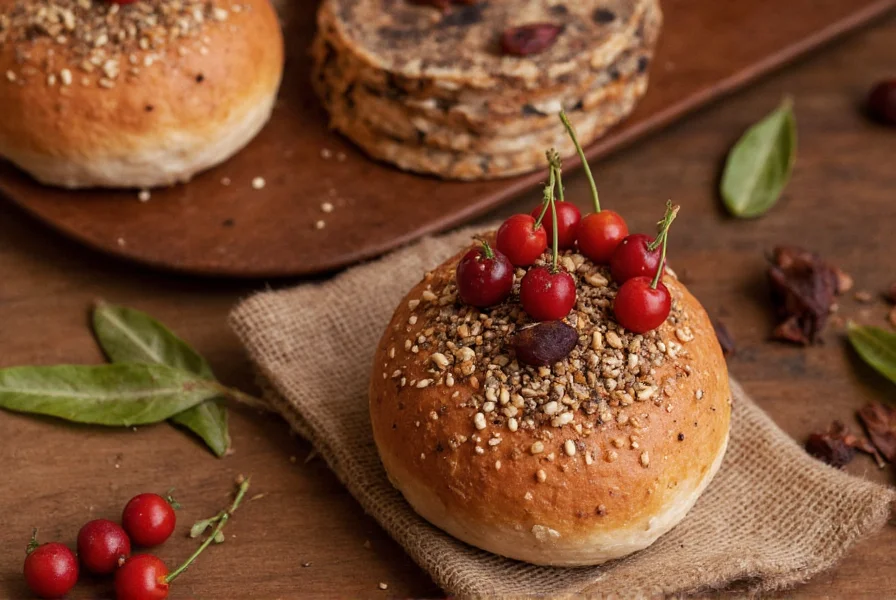For centuries, cumin has been a cornerstone of Indian culinary tradition, weaving its distinctive earthy aroma through kitchens from Kashmir to Kerala. This humble seed, scientifically known as Cuminum cyminum, isn't just a spice—it's a cultural institution that transforms simple ingredients into complex, layered dishes that define Indian gastronomy.
The Historical Roots of Cumin in Indian Cuisine
Archaeological evidence suggests cumin has been used in the Indian subcontinent for over 5,000 years. Ancient Ayurvedic texts document its medicinal properties while traditional cooking manuscripts highlight its culinary significance. Unlike many spices that were introduced through trade routes, cumin grew natively across India, making it one of the few spices with indigenous origins in Indian cooking.
During the Mughal era, cumin became integral to the development of North Indian cuisine, particularly in biryanis and rich meat curries. Meanwhile, in South India, it remained a key component of tempering techniques for dals and vegetable preparations. This regional adaptation demonstrates cumin's remarkable versatility across India's diverse culinary landscape.
Understanding Cumin Varieties in Indian Cooking
Indian kitchens primarily work with two forms of cumin, each serving distinct purposes in traditional recipes:
| Type of Cumin | Characteristics | Primary Culinary Uses |
|---|---|---|
| Whole Cumin Seeds (Jeera) | Small, crescent-shaped seeds with earthy, warm aroma | Tempering (tadka), rice dishes, breads, pickles |
| Ground Cumin (Dhania) | Earthy, slightly citrusy powder with deeper flavor | Curry bases, marinades, spice blends, chutneys |
Many Indian households maintain both forms in their spice racks, recognizing that freshly ground cumin offers a more intense flavor profile than pre-ground versions. The practice of dry-roasting whole seeds before grinding releases essential oils that significantly enhance the spice's aromatic qualities—a technique passed down through generations of Indian cooks.
Regional Applications of Cumin Across India
The usage of cumin varies dramatically across India's culinary regions, reflecting local tastes and cooking traditions:
- North India: Cumin forms the base of most curry preparations, often combined with coriander and turmeric in the "holy trinity" of Indian spices. In Punjabi cuisine, it's essential for dishes like chole (chickpea curry) and aloo jeera (cumin potatoes).
- South India: Used more sparingly but strategically, particularly in tempering for dals and sambar. Tamil Nadu cuisine features cumin prominently in rice dishes like jeera rice and in spice blends for vegetable preparations.
- West India: Gujarati cuisine uses cumin in unique ways, including in sweet preparations like the cumin-infused shrikhand. Maharashtrian cuisine incorporates it into the base of many vegetable dishes and breads.
- East India: Bengali cuisine uses cumin primarily in fish preparations and certain vegetable dishes, though it plays a less dominant role than in other regions.

Mastering Cumin Techniques in Indian Cooking
The proper application of cumin separates authentic Indian cooking from mere approximation. Two fundamental techniques form the foundation of cumin usage:
Tempering (Tadka)
This technique involves heating oil or ghee, then adding whole cumin seeds until they sizzle and release their aroma—typically 30-60 seconds. The critical moment comes when the seeds turn slightly darker but haven't burned. This tempering forms the flavor base for countless Indian dishes, from simple dals to complex meat curries.
Spice Blending
Ground cumin combines with other spices to create signature Indian blends:
- Garam Masala: While regional variations exist, cumin typically comprises 15-20% of this essential spice blend
- Chaat Masala: Cumin provides the earthy base for this tangy street food seasoning
- Tandoori Marinades: Combined with yogurt and other spices for iconic grilled dishes
Professional Indian chefs emphasize that the timing of cumin addition dramatically affects the final dish. Whole seeds added early create a foundational flavor, while ground cumin incorporated later preserves more of its volatile aromatic compounds.
Common Indian Dishes Featuring Cumin
Cumin appears in virtually every category of Indian cuisine. Some signature dishes where it plays a starring role include:
- Dal Tadka: The quintessential Indian lentil dish where cumin seeds form the tempering base
- Jeera Rice: Basmati rice cooked with whole cumin seeds for aromatic fragrance
- Chole Bhature: Chickpea curry where ground cumin provides earthy depth
- Aloo Jeera: Potatoes sautéed with cumin seeds in a simple yet flavorful preparation
- Tandoori Chicken: Marinated with ground cumin among other spices before grilling

Selecting and Storing Cumin for Authentic Indian Flavor
For home cooks seeking authentic Indian flavors, proper cumin selection and storage are crucial:
- Whole seeds: Should be uniform in color (light to medium brown), with a strong aroma when crushed between fingers. Avoid seeds that appear dusty or have lost their characteristic crescent shape.
- Ground cumin: Freshly ground provides superior flavor, but if purchasing pre-ground, ensure it's recently milled and stored in an opaque container to preserve volatile oils.
- Storage: Keep whole seeds in airtight containers away from light and heat. Properly stored, they maintain potency for 12-18 months. Ground cumin loses potency more quickly and should be used within 6 months.
Many Indian households maintain small quantities of whole cumin seeds specifically for daily cooking, grinding only what's needed to ensure maximum flavor impact in each dish—a practice that significantly elevates the quality of home-cooked Indian meals.
Cumin Substitutions in Indian Recipes
While nothing perfectly replicates cumin's unique flavor profile, certain substitutions can work in specific contexts:
- Caraway seeds: Share similar earthy notes but with more anise flavor—best for breads rather than curries
- Fennel seeds: Milder alternative that works in vegetable dishes but lacks cumin's depth
- Cumin-coriander blend: When cumin is unavailable, a 1:2 ratio of coriander to cumin can approximate some flavor dimensions
However, experienced Indian chefs emphasize that substituting cumin often fundamentally alters the character of traditional dishes. For authentic Indian cooking, maintaining a supply of quality cumin remains essential.











 浙公网安备
33010002000092号
浙公网安备
33010002000092号 浙B2-20120091-4
浙B2-20120091-4